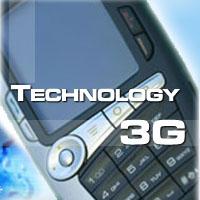
Third generation (3G) networks were conceived from the Universal MobileTelecommunications Service (UMTS) concept for high speed networks for enabling a variety of data intensive applications. 3G systems consist of the two main standards, CDMA2000 and W-CDMA, as well as other 3G variants such as NTT DoCoMo's Freedom of Mobile Multimedia Access (FOMA) and Time Division Synchronous Code Division Multiple Access (TD-SCDMA) used primarily in China.
The major impetus for 3G is to provide for faster data speed for data-intensive applications such as video. In addition, 3G to providing faster data speeds on a per-user basis, 3G is also helpful to provide greater overall capacity for voice and data users. For example, NTT DoCoMo's plan to migrate iMode users from the 2G PDC network to FOM is driven by overall capacity concerns, as apposed to individual user data speed requirement.
Data Speed
The data speed of 3G is determined based on a combination of factors including the chip rate, channel structure, power control, and synchronization.
An example of calculating the theoretical 3G data speed is as follows:
- W-CDMA assigned code 400-500 Kpbs/code. 6 codes X 400 > 2Mbps (UMTS target for 3G data speed in fixed location)
Actual data speeds will vary in accordance with several factors including:
- Number of users in cell/sector
- Distance of user from cell
- User is moving or stationary
- Network operator capacity and network optimization requirements
1xEV-DO is a data-only solution, supporting a theoretical data speed of up to 2.457 Mbps
1xEV-DV is a data and voice solution, supporting a theoretical data speed of up to 3.072 Mbps
FOMA has two operational modes, supporting a dedicated 64 Kbps connection or a 384 Kbps downlink/64 Kbps uplink best-effort connection.
TD-SCDMA can operate in 1.6 MHz or 5 MHz mode for 2 Mbps or 6 Mpbs respectively
Comparison of W-CDMA to CDMA2000
Both use a coding scheme that separates each subscriber from other subscribers
Both use control channels to manage the network
W-CDMA and CDMA2000 are not compatible from the perspective that they have different chip rates - 3.84 MCPS for W-CDMA vs. 1.2888 MCPS for CMDA2000. W-CDMA uses a 5 MHz channel. Initially, CDMA2000 uses only a 1.25 MHz channel, but with CDMA2000 3x, three 1.25 MHz channels can be combined to form a super channel structure.
W-CDMA is synchronous, relying on mobile station time measurements between two base stations, rather than using GPS as CDMA2000 does.
There are three modes of operation for W-CDMA/CDMA2000:
- Direct Sequence (DS) W-CDMA (UMTS) for Frequency Divsion Duplex (FDD)
- W-CDMA Time Division Duplex (TDD)
- CDMA2000 Multi-carrier FDD
Each of the three radio interface methods may be employed on either a GSM or ANSI-based Core Network (CN).
IS-833 is a standard, developed by the 3GPP2, to support CDMA2000 1xRTT Radio Access Network (RAN) to interface with a GSM CN. RAN upgrade required includes CDMA base station and BSC. CN upgrade required includes CDMA PDSN and AAA server.
3G Architecture
W-CDMA uses the same CN as GPRS, utilizing existing infrastruture such as the GGSN and SGSN. W-CDMA, however, does require new RAN infrastructure such as the Node B, which replaces the BTS, and the Radio Network Controller (RNC), which replaces the BSC. Ultimately, the W-CDMA CN will evolve to comprise a full Mobile IP infrastructure including Media Gateway (MGW) and Media Gateway Controller (MGC) equipment for VoIP and other new equipment such as the HSS and CSDF.
CDMA2000 starts with new channel cards and then migrates to a full Mobile IP infrastructure requiring new Core Network (CN) infrastructure such as the AAA server and Packet Data Server Node (PDSN).


















No comments:
Post a Comment